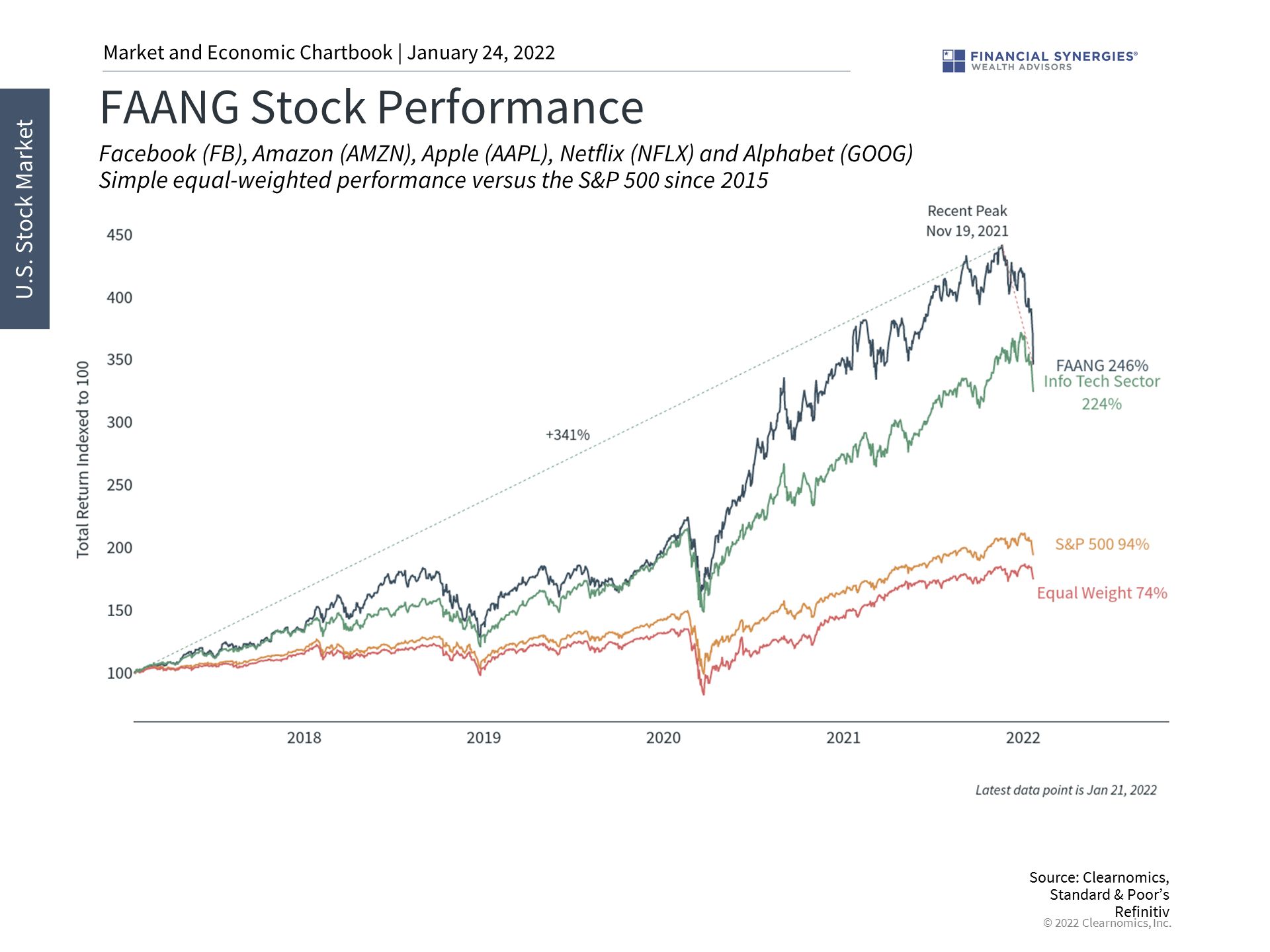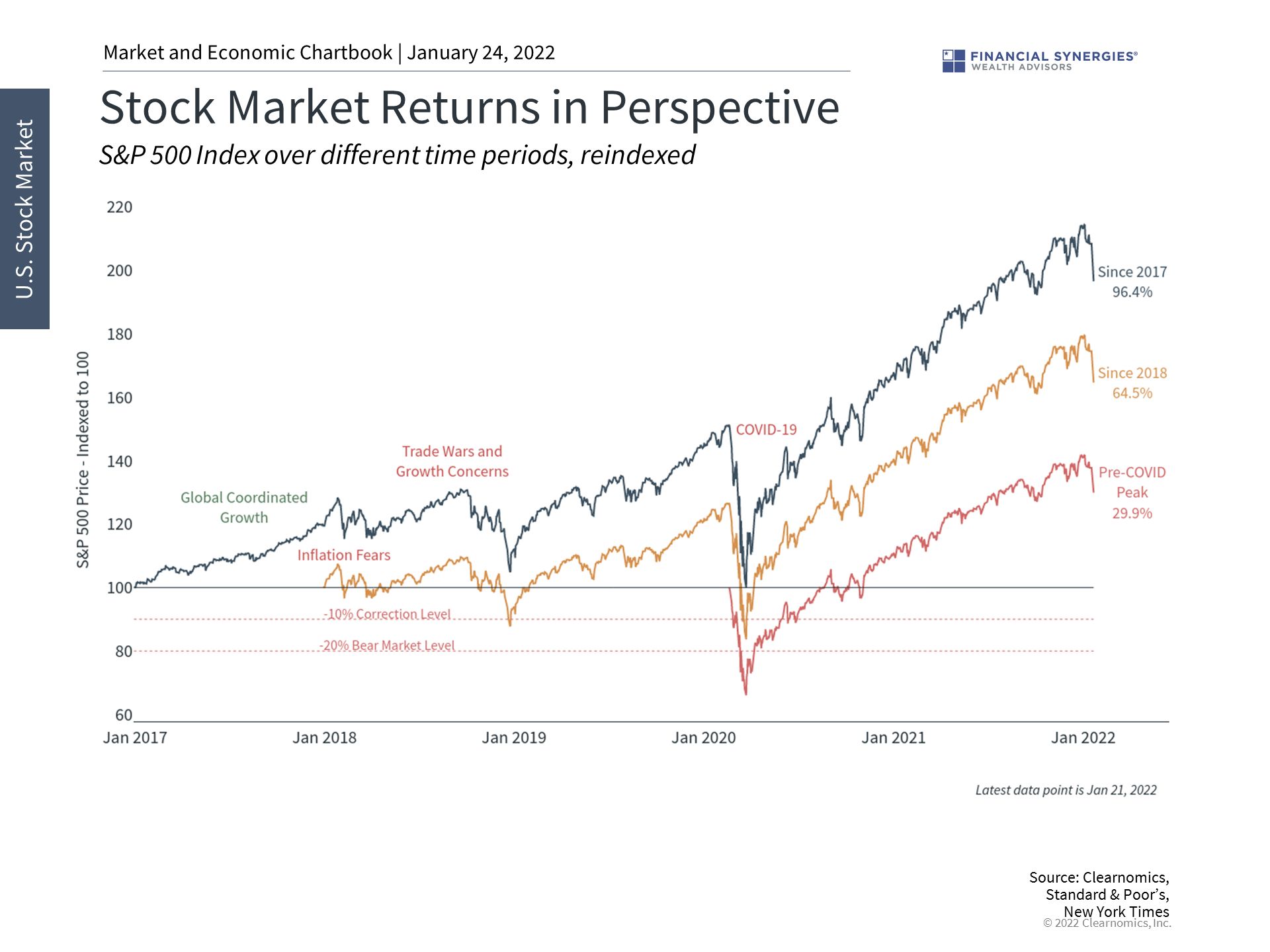[ad_1]

Today was a stunning turnaround for stocks, with the Dow Jones ending the day in positive territory after being down more than 1,000 points. All the major US indices landed in the green, overcoming tremendous losses earlier in the day.
At the moment, headlines are focused on the stock market correction, especially among technology stocks, that has been building for weeks. The NASDAQ has declined about 11% this year, the S&P 500 tech sector has fallen by nearly as much, and some individual stocks have performed much worse.
The broad market S&P 500 closed higher after briefly hitting a correction earlier in the session, falling more than 10% from its Jan. 3 record close.
While short-term market pullbacks are normal and inevitable, especially within volatile parts of the market, many investors are naturally concerned about what this means for the year ahead.
The fact of the matter is that 10% corrections occur on a regular basis, even in years with otherwise strong market returns. No matter how bad pullbacks feel, markets typically recover within a few months which usually catches investors by surprise. The current (near) correction may be more striking because it is happening at the start of the year even though this timing is purely coincidental.
For these reasons, the primary challenge of investing isn’t necessarily related to financial or economic analysis and facts. Instead, achieving financial goals has more to do with our emotional and behavioral reactions to short-term adversity.
While our innate fight-or-flight response may tell us that market corrections are a time to sell and give up on our financial plans, the irony is that this is often when the market is the most attractive. History shows that investors who stay disciplined through these periods are often rewarded. While the past is no guarantee of the future, those with long time horizons need not overreact to market setbacks.
After all, financial markets naturally reflect the different views, goals and needs of a diverse set of investors, both large institutions as well as everyday individuals. When these factors change unexpectedly, markets can swing wildly over short periods of time. At the moment, investors are trying to digest the implications of faster Fed rate hikes, higher inflation, elevated market valuations, geopolitical tensions and more. It should come as no surprise that the most expensive parts of the market have struggled in recent weeks.
On top of this, the stock market tries to take into account what could happen in the future, today. This means that, over any short period, the stock market might get it wrong or overreact because it is too optimistic or pessimistic. Over the longer run, as new information arises, markets expectations and reality converge.
This helps to explain many of the challenges investors have faced with fast-growing stocks, primarily in tech, which reflect a number of different themes and trades. For some, tech stocks represented a short-term trade that benefited from work-from-home and the pandemic lockdowns. For others, tech stocks represent the growth of digital tools across sectors over the course of years.
Just as there was significant investor enthusiasm during the dot-com bubble of the 1990s, with many stocks doing well for a short period, it ultimately took decades longer for the true winners of that period to be revealed. So, while the stock market and the tech sector may be stumbling, many long-term themes are still attractive.
Current market dynamics also highlight the need for diversification across sectors, styles, and asset classes for a few reasons. First, tech stocks are no longer isolated to the Information Technology sector. Instead, sectors as diverse as Communication Services and Consumer Discretionary consist of what many would consider to be major tech companies.
Second, market rotations among sectors and across Value and Growth occur regularly. Since it is difficult, if not impossible, to predict the timing of these shifts, investors often do better by holding an appropriate amount of each.
Third, asset classes like fixed income, which struggled in 2021 as interest rates rose, still provide stability to portfolios during uncertain times. Many investors benefited from holding an appropriate allocation of bonds during the initial pandemic crash in 2020.
Finally, perspective matters. Although corrections are never pleasant, investors who held on over the past few years have experienced the S&P 500 gain 30% since the pre-COVID peak, 65% since the beginning of 2018, and 96% over the past 5 years. The fortitude to handle near-term uncertainty is what allows us to benefit from long run gains throughout the market cycle.
Below are three charts that highlight the importance of staying disciplined in the months and years to come.
1. Stock market corrections are normal and historically recover quickly

Market pullbacks and corrections are normal, unavoidable, and can occur at any time. Rather than panicking during these episodes, it’s important to focus on long-term goals. Markets often turn around when investors least expect it, with the average correction recovery taking place in four months or less.
2. Tech stocks have significantly outperformed over the past few years

It is no secret that tech stocks have done very well not just since the pandemic, but also over the last several years. And while these stocks are down significantly over the past few weeks, long-term investors have still done quite well. This highlights the importance of staying diversified across sectors and having the right time horizon.
3. Having the right time horizon is critical

While the market is in or near correction territory, those with longer perspectives may see a different picture. Even when measured from the highest point before the pandemic crash, stocks are up nearly 30%. They have done even better over longer time horizons, underscoring the need to stay long-term when markets are the most uncertain.
Although never pleasant, stock market downturns and volatility are the price of admission. This volatility and potential for short-term loss is also what creates our opportunities for tremendous long-term gains.
Source: Clearnomics
[ad_2]
Source links Google News

